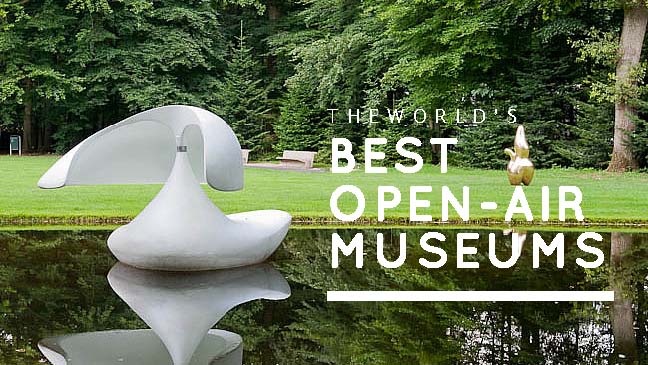The World’s Best Open-Air Museums
Spring is in the air, a fact that hasn’t gone unnoticed for us members of the ArtSmart Roundtable. For this month’s round of articles the focus is naturally on the warmer, brighter season ahead. The theme for the month is ‘spring‘. For us it will be a good reason to head out into the fresh air and locate the world’s best open-air museums. What the other members of the group are planning? Count on something similar: you can find all the other articles linked to at the end of this article. Enjoy!
It can successfully be argued that when the weather is getting nicer, finding the right arguments for hanging out in museums is becoming harder. Not as there aren’t plenty of good reasons. Escaping the scorching sun into the coolness of a museum can be the smartest choice on any hot August-day in for example Tuscany, Paris or New York. There are also good reasons to escape unexpected torrential downpours, or even fleeing the beach with the crowds when you have unexpected and compelling alternatives, like in Alicante where some great museums are just steps away from the beach. But in general we agree, if the weather is pleasant there are few good reasons for staying inside.
Luckily there are many good options where you can combine art and outdoorsy activities. You can be out in the sun, enjoy a fresh breeze and have a wonderful art-filled experience. But where exactly shall we go to find the world’s best open-air museums? We have our list of favourites ready. Some we have visited already, some we wish to, and the combination of the two is what we’re going to share with you here. In our list below we travel from our front door here in The Netherlands to America, from Japan to Brazil. From there we go to some remote corners of Eastern Europe. Through the outskirts of Nordic capitals we head south to Catalonia to even land on the other side of the world in New Zealand.
Some of our choices presented here are pure open-air museums, many of which are sculpture parks. Some are museums with a huge open-air section, while a part of the museum is in the more traditional indoor setting. What they all have in common is that being in open air is a big part of the experience.
Kröller-Müller Museum
In the Hoge Veluwe National Park, The Netherlands
This park might still be a secret for most visitors to the Netherlands, but it is definitely well worth the detour from the usual route most tourists follow. Located close to the German border nearby the city of Arnhem, this museum is located inside the Hoge Veluwe National Park, a beautiful and in many ways surprising part of the Netherlands.
The museum is the creation of a visionary collector, Ms. Helene Kröller-Müller, who established the museum during the first decades of the 20th century. Many people don’t know that the fame Vincent Van Gogh today enjoys likely wouldn’t have happened without the tireless efforts of Ms. Helene Kröller-Müller. She was one of the first major collectors of the Dutch master.
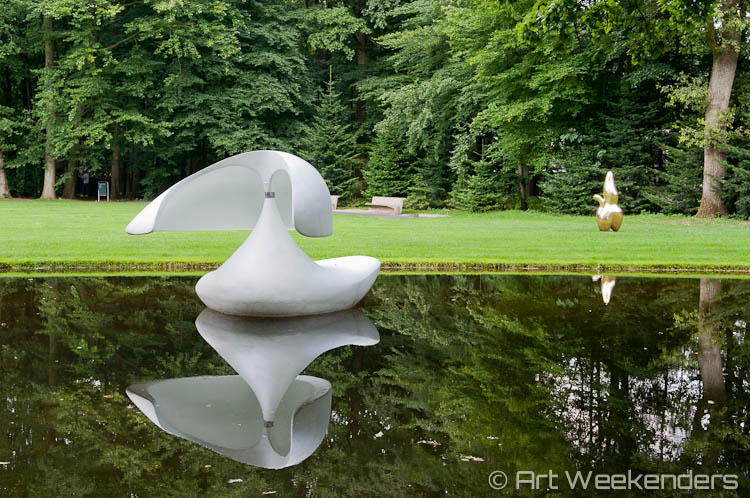
Kroller Muller Museum, The Netherlands.
Today you will find the second largest collection of Van Gogh’s in the world here. But the Kröller-Müller Museum is much more: the fantastic estate it is located on, serves as an open-air sculpture park and in summer also exhibitions and performances are arranged. If you get tired of the art, you can just jump on the bicycles provided free of charge and head out into the national park and enjoy the beautiful scenery the park offers. Last year we visited the park for a day, which was a fantastic, fun and beautiful experience. You can read more about it in our article An Art Day at the Kröller-Müller Museum.
Louisiana Museum & The Sculpture Park
North of Copenhagen, Denmark
A somewhat similar experience to the above mentioned Kröller-Müller Museum is Denmark’s Louisiana. While it is a museum mainly famous for its world-class – temporary – contemporary art exhibitions and the permanent collection of 3,500 pieces, ranging from Picasso to Warhol and the richest Danish art collection in the world, it is also world-famous for its sculpture park, likely one of the best ones in the world.
When Louisiana was established in 1958, one of the most important goals of the founders was just that: making Louisiana a famous place for sculpture. The park eventually expanded and the interaction with the semi-circle shaped architecture of the main buildings and the seaside location, overlooking the Sound with Sweden on the other side of the water, created a unique environment. The collection kept on growing over the decades and today here you will find all the modern masters of the art of sculpturing, like Alexander Calder, Joan Miró, Henry Moore, Jean Arp, Max Ernst, Richard Serra and many-many more. Did we say that Louisiana also has one of the most important Giacometti collections in the world?

If you visit Copenhagen this is a must, especially in summertime, when a stroll on the Louisiana Museum estate will remain a memorable experience for always. The Louisiana Museum is located 40 kilometres north of the city centre and you can read more about it in our article about the museum and sculpture park or on the site of the Louisiana Museum itself.
The Vigeland Sculpture Park
Oslo, Norway
The Vigeland Sculpture Park is a unique place in the world, being the biggest sculpture park including the works of one artist only. The Vigeland Sculpture Park was mainly completed between 1939 and 1949 and it is the life work of the Norwegian sculptor, Gustav Vigeland. The park consists of some 200 works, sculptures of bronze, granite and wrought iron. Since the park was created in collaboration with the artist himself, all details bare his testimony including the architecture. The park is accessible day and night, every single day of the year and it’s totally free.
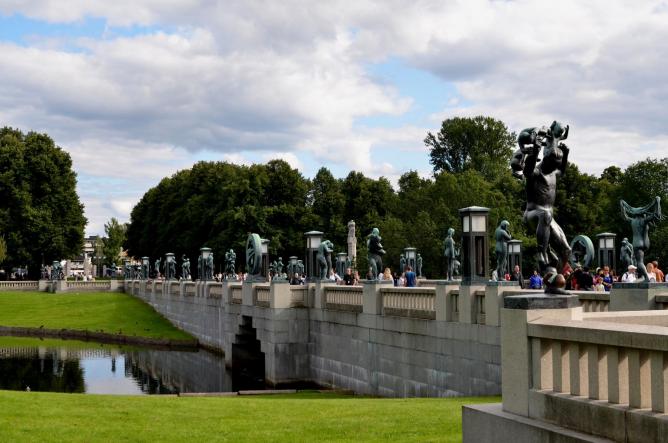
Frogner Park Bridge | © Ignaz Wiradi/Wikimedia Commons
The park also includes a sculpture museum, the de facto sculpture museum of the Norwegian capital. You can read more about the park on the official site of the Vigeland Museum, and learn everything you need to know about the art museums in Oslo in our article. This park is Oslo’s most visited attraction and you can prepare yourself for some weird images, such as a man fighting flying babies or a woman wresting with giant lizard, or why not a ‘Manneken Piss‘-resembling boy statue doing a weird angry dance.
Naoshima Contemporary Art Museum with Benesse House
Naoshima Island, Japan
Until the late 1980’s the island of Naoshima carried on its sleepy existence more or less undisturbed, where fishing has been the main activity over many centuries. But thanks to the visionary ideas of the art lover Tetsuhiko Fukatake and the mayor of Naoshima, the island has been transformed into the most exciting contemporary art destination in the world. Upon the plans conceived, work has been carried out and the island has been transformed into a living museum with different complexes and loads of exciting ideas. Among the most prominent works of art you can find here are works by Niki de Saint Phalle, Karel Appel, Alberto Giacometti, Walter de Maria and many-many more. You can find out almost everything in our hugely popular article about the island here: The Art Island of Naoshima.

Giant pumpkin by Yayoi Kusama, Naoshima, Japan.
Dali’s Portlligat
Portlligat/Cadaqués – Catalonia, Spain
In the outskirts of the seaside village of Cadaqués in Catalonia’s Costa Brava region, you will find Salvador Dali’s beloved home in Portlligat. Today this is one of the main museums of the so-called Dalinian triangle, which has its epicentre in Figueres where the surrealist giant was born (read more about it in our huge guide to the Dalinian Triangle here).
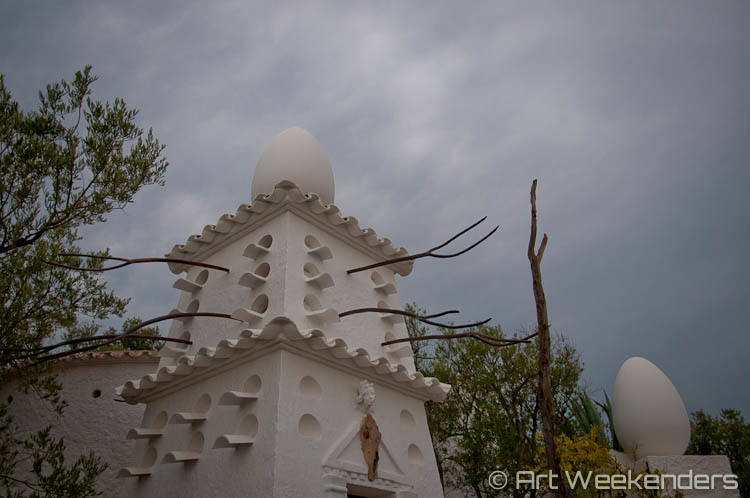
Part of the Dali House in Portlligat, Spain
This villa converted into a museum was Dali’s most beloved possession and you will realise why. The surroundings are fantastic, the view from the grounds superb. It’s a perfect outing for getting to know the artist a bit more intimately, while enjoying a bit of that special Costa Brava idyll you can find here. This is an excursion we can warmly recommend: why not combining it with a night or two in the main village of beautiful Cadaqués and touring the other sites of the Dalinian Triangle from here?
Niki de Saint Phalle’s Tarot Garden
Garavicchio, Grossetto, Italy
If you find yourself in Tuscany – and by the way, please pay special attention to Alexandra‘s ArtTrav-article about the Tuscan art parks in the links at the bottom of the article, there are loads of them – keep in mind that art in the region is not “just” about Giotto, the Renaissance and all that comes with it in Florence, Siena and otherwise. There’s also a pocket reserved for modern art in a place called Garavicchio, in the Grossetto province, where you can find Niki de Saint Phalle‘s sculpture park tucked into the beautiful Tuscan surroundings.

Niki de Saint Phalle’s Tarot Garden
Inspired by Gaudi’s Park Güell in Barcelona, the park became the life project of the artist who purchased the land in the late 1970’s with the idea of creating this park of her dreams. The park finally opened in 1998 and today it’s a beloved art destination. It contains 22 monumental figures constructed of reinforced concrete and covered with mirrors and ceramic mosaic, representing the greater mysteries of the tarot.
The Hakone Open-Air Museum
Japan’s Hakone Mountains
There seems to be something with Japan and their love for open-air sculpture parks. Besides Naoshima (see above), there’s a second great reason to venture off the usual Japanese tourism trail: the sculpture park in the Hakone Mountains, some 2-3 hours south of Tokyo, not too far from the Fuji Mountain. The Hakone Open-Air Museum was established in 1969 and, really, few museum can argue to have a better backdrop for their art than here. There’s some 70,000 square meters filled with sculptures, covering pretty much everyone who matters in the modern and contemporary art world.

Hakone Open Air Museum – Picture from the official website of the museum
Just in case the natural beauty of the place gets too much of you: there are five indoor pavilions as well hosting both temporary exhibitions and the rich permanent collection, for instance the Picasso pavilion with its 300 pieces of art. We imagine that spring is the best time of the year to go (we can picture some cherry-blossom blooming), but from what we hear visiting is ideal any time, where nature itself is a constantly changing guest artist. Among the sculptures you will find here are works by Henry Moore, Rodin, Bourdelle, Miró and many-many more, especially for the Western-world little known but exciting Japanese artists. For more information visit the Hakone Open-Air Museum website.
Changchun World Sculpture Park
Changchun, China (Two-hours flight north-east from Beijing)
While we doubt that many of us will have the chance to “drop in” to the park just like that, it is one for the armchair traveller, if nothing else. But just in case you will find yourself some 300 kilometres north of the North Korean border, in the smallish city of 7 million, Changchun, by all means pop into the world’s largest sculpture park. Here are some statistics: the park is 92 hectares large, it contains 451 sculpture works created by 401 sculptors from 216 different countries and regions. Yes, the whole world is here basically, be it Eskimo art, Mayan, Maori, Indian or you name it, some more “boring” Westerners like Rodin. If we can trust several sources we came across this is “the coolest sculpture park in the world you’ve never heard of“.
For some more info, you can visit the Changchun sculpture park’s official website, which is really doing its best to convince you not to go, it’s that boring.
Gibbs Farm
Kaipara District, Auckland, New Zealand
If you find yourself on the opposite side of the world from where we, the Art Weekenders, are now, and you are in New Zealand, there’s a park that triggers the imagination. The park only exists for the last two decades, being established in 1991, but it is one of the best thought-out sculpture park initiatives that ever existed. The man behind it is Alan Gibbs, one of the wealthiest Kiwis, who bought this farm just outside the Kaipara Harbour, one of the world’s biggest commercial ports, just north of Auckland. Here his idea was to commission world-famous artists who would set up new works in the park in full congruence with the surrounding nature. The outcome seems to be mesmerising as this article from the Twisted Sifter blog witnesses of.
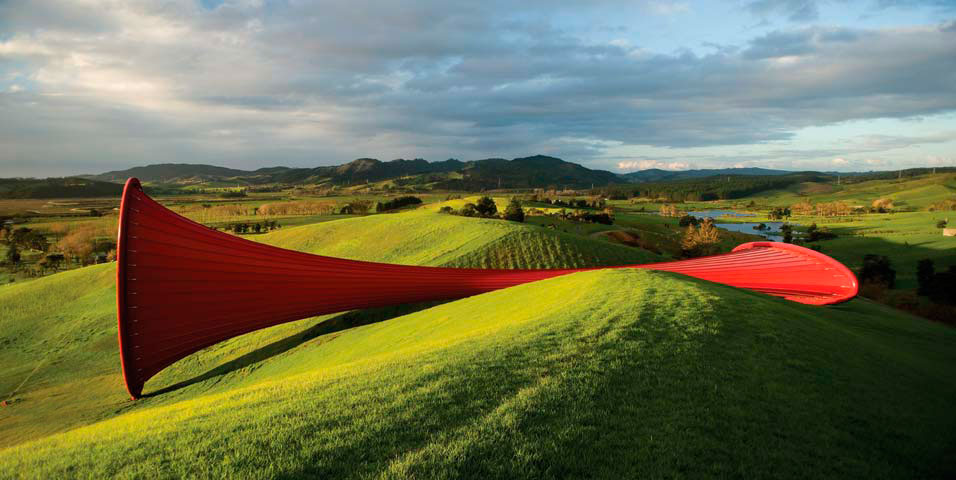
Anish Kapoor, Dismemberment, Site 1 (2009) – Gibbs Farm (source GibbsFarm.org.nz)
It seems to be an amazing site, we’re already searching for flights to go at once… However, if you think that you can just show up and enjoy, you’re wrong. The park is open to the public only by appointment and currently your first best chance to see it is a half year from now in September 2015, when the first open monthly visitor’s slot is available. The good part is that it’s free. If you’re interested, this is where you arrange your visit.
Instituto Inhotim
Brumadinho, Belo Horizonte, Brazil
Inhotim is the art park in South America that everyone needs to put on their list. We travelled extensively in Brazil a few years ago, and somehow we managed to be among the ones who didn’t have the list with us. We prioritised our itinerary differently so we missed visiting Inhotim. As they say, we were saving something for the next time. However, we are going to use our friend Jenna from ‘This Is My Happiness‘ as our trusted source for the recommendation: you can read her review of Inhotim on her site, presented with loads of visual evidence that this is a cutting edge Brazilian experience. To summarise it all briefly: Inhotim is the only Brazilian art institution with a world-class collection of contemporary art continuously on display.
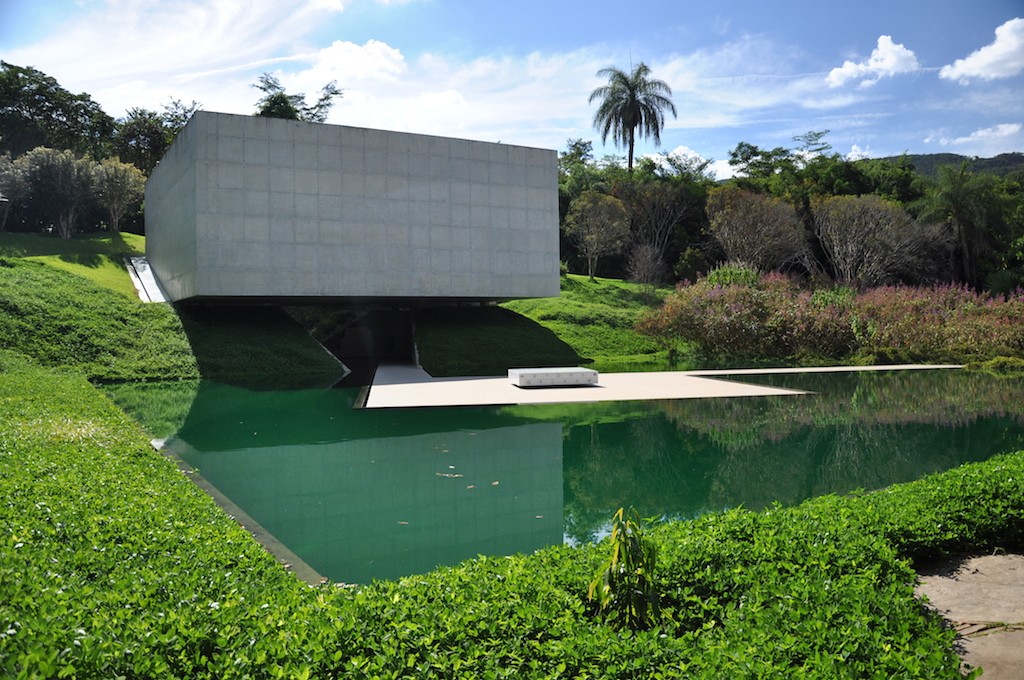
Instituto Inhotim, Brazil – The Pavilion. Source: Wikimedia Commons
Many of the works found here are site-specific works by renowned artists such as Doug Aitken, Matthew Barney and Jorge Macchi. Inhotim is more than just a contemporary art site, it is complemented by a botanical garden and it’s huge, thus you will need a full day to visit everything there is to see here. No worries, you won’t be bored and there are cafés and eateries around and soon enough even a hotel. Belo Horizonte is some 45 minutes away while the neighbouring town of Brumadinho is around the corner, although without much charm or charming accommodation options.
Oficina Brennand (Instituto Francois Brennand)
While we’re in Brazil, we can mention another park of great interest – one that we did manage to visit. Just outside Recife – not super-easy to get to without a car, or Portuguese-knowledge, but doable – is the estate of the local sculptor’s Francois Brennand. It is a fascinating place where the life-oeuvre of the Brazilian artist can be admired, where strange faces and phallic symbols take up a huge part of the large output the sculptor still produces. If you’re lucky, you might even run into the artist, who lives on the estate and still produces his dream-like characters.
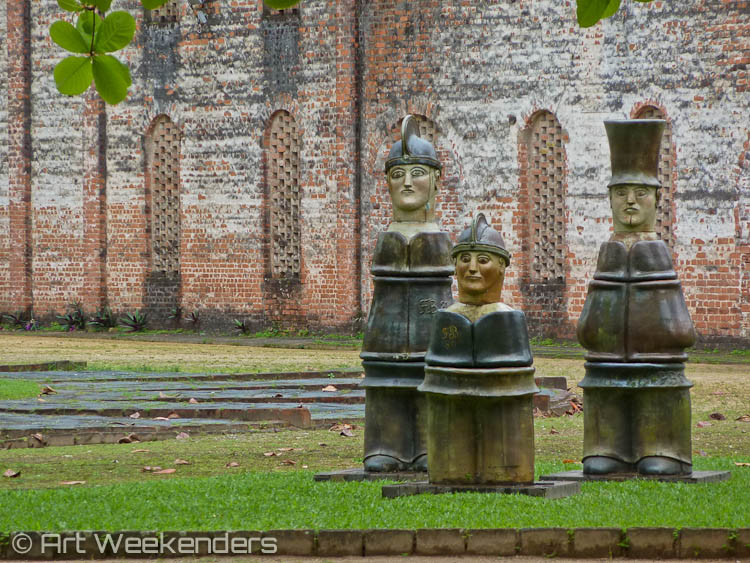
Oficina Brennand, Brazil
It’s a beautiful estate and – since this is northern Brazil, where modern art still doesn’t have a huge place in people’s lives – super-chilled without any crowds. You can see some more of Francois Brennand’s work on our site. For a bit more practical details please visit the site of the institution (as so often in Brazil, the site is pretty poor and only in Portuguese, but since the options are limited, you should be able to get the information you need if you are in the Recife/Olinda area).
Yorkshire Sculpture Park
Bretton, West Yorkshire, England
Since its modest beginnings in 1977 a lot has happened around the Yorkshire Sculpture Park. From the original 31 sculptures the site expanded dramatically, and today it is considered one of the leading institutions in the world for challenging and inspiring visitors through its sculptures. The list of artists exhibiting here is impressive: Joan Miró, Henry Moore, Anthony Caro, Anish Kapoor, David Nash and William Turnbull, and the list of positive reviews almost even more so. Visited yearly by some 300,000 people, this is a place which is absorbing visitors and challenges perceptions of art, nature and the frontiers in between. Located in West Bretton, Wakefield, it is easily reached by car, and also doable by public transportation (Wakefield train station is some seven miles away). You can even stay on the Bretton Estate‘s grounds. You can find out more on the (not so easily navigable) YSP website.
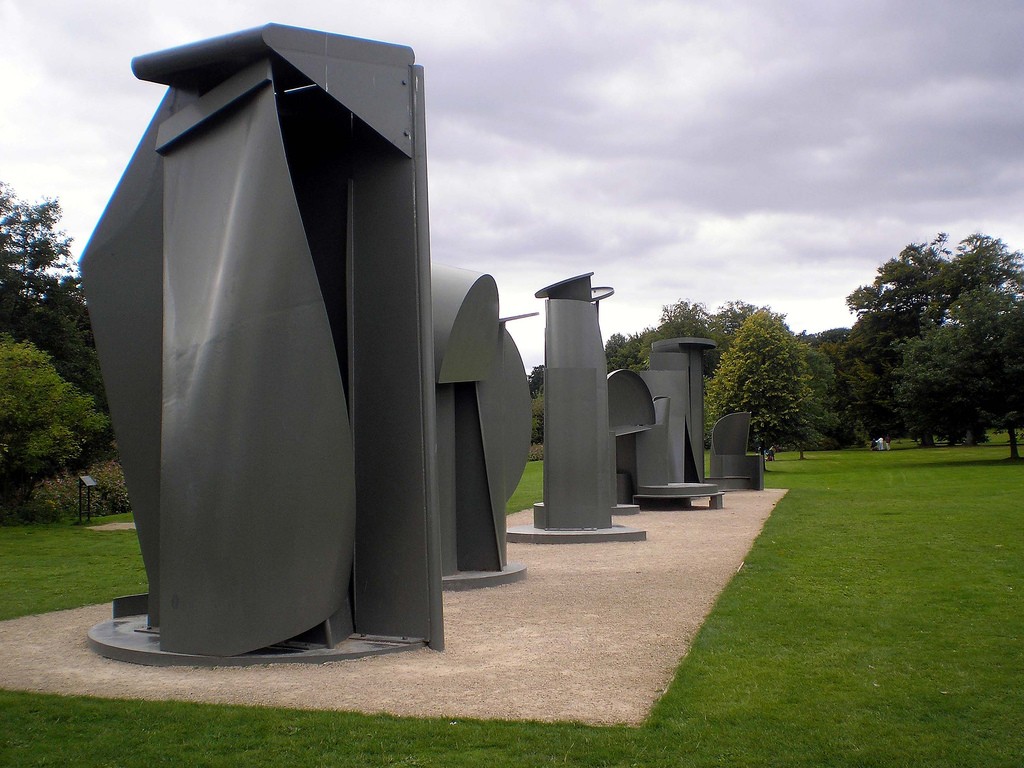
Yorkshire Sculpture Park – Anthony Caro: Promenade (Wikimedia Commons)
Skulpturen Park Köln
Cologne, Germany
In the heart of Europe the foremost place “for the exploration of contemporary sculpture” is just outside the city centre of Cologne, along the Rhein a bit further north just half an hours walk away from the world-famous Cologne Cathedral. Cologne is one of the best art cities in Germany, a place where contemporary art is striving, so no wonder that a local collector-couple, Michael and Eleonore Stoffel, initiated the idea right here. The Sculpture Park was established in 1997 and what sets it apart from other sculpture parks is that instead of focusing on a permanent collection, the main idea is to create a series of two-year exhibitions, presenting works of some of the biggest names in contemporary sculpturing.
The park covers some 2,300 square meters and is open daily, with free admission. The seventh edition of the two-year-long exhibition is coming to its end now in May of 2015. Soon thereafter a new edition, KölnSkulptur #8, will take its place. The park is open daily from 10:30 am until the fall of the night and it is complemented by a mobile phone based exhibition guide. For more information about the park, please visit their official (rather poor) website. It might not be one of the best parks in the world, but likely a good way of spending an afternoon if you have your way through Cologne.
Verbeke Foundation
Kemzeke/Stekene, West Flanders, Belgium
We can just as well say it at once. This is likely not for everyone’s taste, but if you like it a bit gritty, unpretentious, rough, you will likely appreciate this space. As the Foundation themselves describes it: “Our exhibition space does not aim to be an oasis. Our presentation is unfinished, in motion, unpolished, contradictory, untidy, complex, inharmonious, living and unmonumental, like the world outside of the museum walls“. The space has been open since the summer of 2007 and it prides itself for offering a forum for new, less renowned artists. The museum has indoor pavilions as well, and if you so please you can spend the night inside some of the art works, one of them is – to say the least – very-very special. That special that I almost don’t even dare writing about it here, but it has something to do with human intestines… – nice, eh?
If you are heading from Antwerp towards Ghent or Brugges you might like to stop here, in that case you can find more information on the Verbeke Foundation website.
Storm King Art Center
Mountainville, New York, United States
Located along the Hudson River, about an hour’s drive from Manhattan, this is likely the biggest open-air sculpture park in the United States, and also one of the oldest in the world. Established in the 1960s, after a humble start with a few minor works, the park rapidly expanded in the 1970s to almost inadvertently become the most important sculpture park of the country. For instance in 1975 five monumental works by Mark di Suvero were saved and ended up here to now form the base of the collection. Also when the MoMa underwent a renovation of its own sculpture park, they asked Storm King to exhibit some of the works for a year.
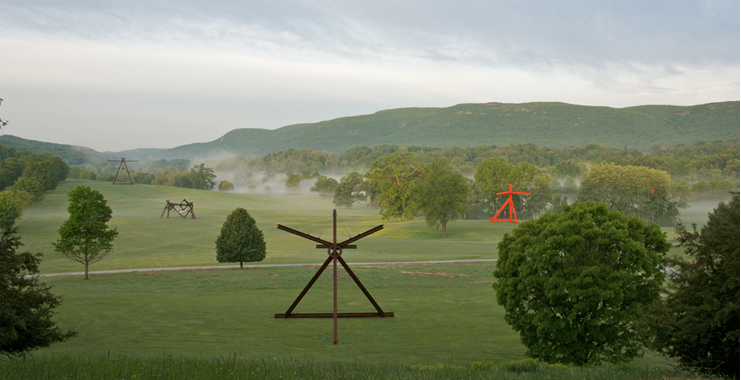
Storm King Art Centre Mark di Suvero – Source: StormKing.org
Today all the major names are represented here: Alexander Calder, Henry Moore, Isamu Noguchi, Richard Serra, Magdalena Abakanowicz, Andy Goldsworthy and Roy Lichtenstein. The Alan Gibbs farm presented above is said to have drawn its inspiration from this place, with focus on the interaction between art and nature. The park is open from April to October and you can find all the information you need on the Storm King website.
Wanås Konst
Wanås Castle, Östra Göinge, Skåne, Sweden
In the middle of the forest in southern Sweden you will find a hidden secret, an art gem that easily will find a spot among the world’s best open-air museums. Funny thing is that you would think that almost nobody knows about it, but the track record says something completely different. Over 250 artists have exhibited at Wanås Konst since 1987, and some of the names are not just big, they’re gigantic: Yoko Ono has work here and so does Marina Abramovich. Wanås Konst prides itself for being “highly accessible, informal, and undidactic“, with the mission of producing, presenting and procuring art that challenges and redefines society.
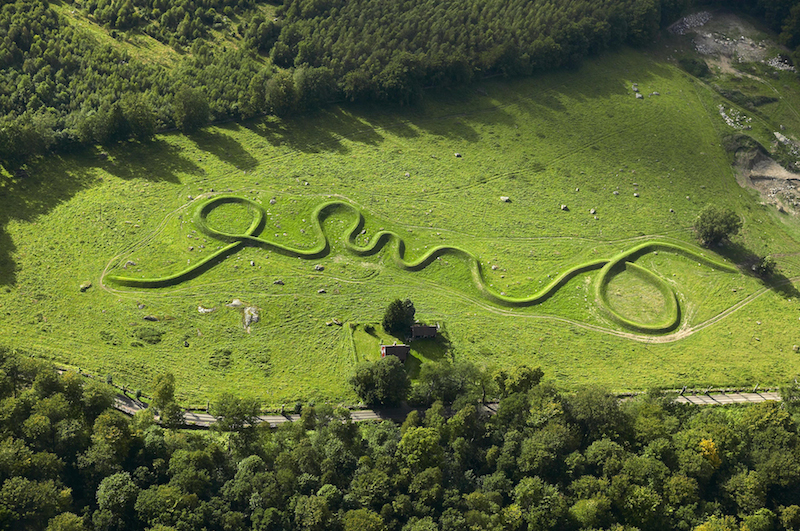
Wanås Konst – Maya Lin 11 Minute Line – Copyright: Wanås Konst
The vision is to have a place accessible for the many – be it kids, grown-ups, art experts or random visitors – with the goal to enjoy art in a relaxed manner. It’s certainly a place that is intriguing, and I’m not saying it only because this is from the region of Sweden where I happened to grow up. By the way, a region that is worth a visit in general, the neighbouring Österlen for instance is a huge summer destination with idyllic fishermen’s villages and artist colonies. we wrote about visit
For more about the park check out the post we wrote about visit.
Pedvale Open-Air Art Museum
Pedvale, near Sabile, Latvia
Another open-air museum that stays close to nature and works hard to maintain that symbiosis is Pedvale. The Open-Air Art Museum at Pedvale was opened by sculptor Ojars Arvids Feldbergs soon after the collapse of the Soviet Union in 1991 and is now a State Historical Monument. The permanent collection of the Museum includes more than 150 works of art, all created during symposia, workshops and plenaries organised by Pedvale themselves. Each year Pedvale Museum chooses a theme for the artists to base their creative work on, and themes in the past have covered topics like the four elements, the “unknown element”, “timespace”, or “Stone. Motion”. If you’re in Riga and feel like getting to know the countryside, this is a good opportunity to venture further afield. Without car it’s a bit harder to get to, but entirely plausible. You can read more about Pedvale on their website.
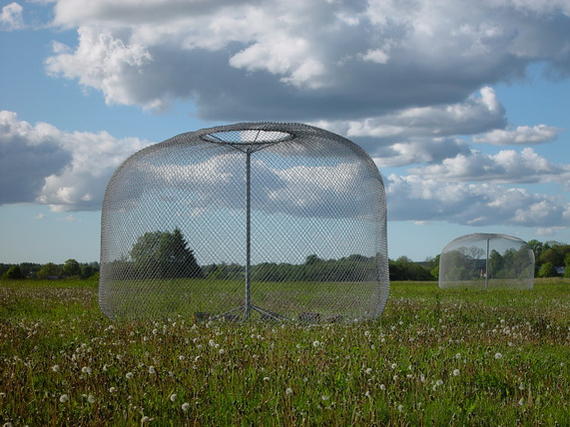
Pedvale Open Air Museum – John Ruppert (USA) “Orbs”, “Tree” – Copyright Pedvale
Château La Coste
Le Puy Sainte Réparade, Aix-en-Provence, France
What would an art round-up be without an entry from France? Our pick is a place which combines another pleasure we have, namely wine. Château La Coste in Provence is one of the best-known biodynamic wineries in the region and in 2004 they came up with a quite unusual diversification idea: artists and architects from all over the world were invited to join and pick a place they favoured in the vineyard, a place in the domaine that spoke directly to them. Once their place was picked, they were given the freedom to create something of their liking.
The works on display keep expending each year, the latest addition is rumoured to be a new pavilion to be opened by Lee Ufan. Other artists already having their works here include Louise Bourgeois, Paul Matisse, Tadeo Ando and Frank Gehry. The Château La Coste offers two-hours guided tours for 15 Euros and is located just 20 minutes north of Aix-en-Provence. You can read more about them on their website.
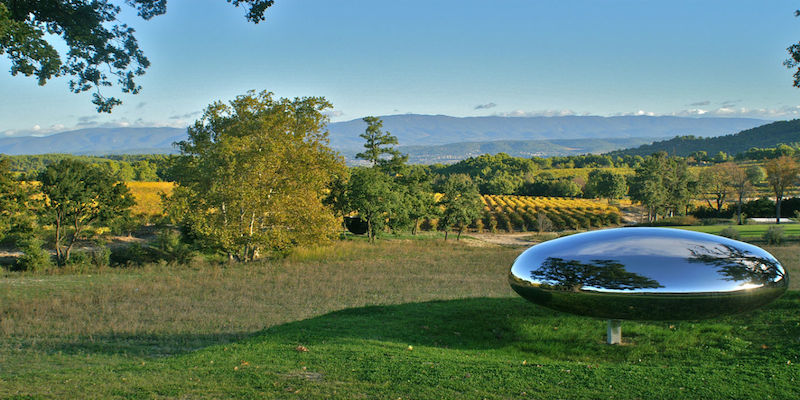
Château La Coste – Drop by Tom Shannon. Copyright: Château La Coste
We hope we managed to inspire you to find some ideas to combine nature and art experiences in one go. We believe there are many others we should know about – if you know of any art park worth including, just let us know (comment below or email us if you so prefer), we’re happy to include more sites of interest.
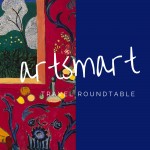 This month’s other contributions in the ArtSmart Roundtable can be found here, please take a look at them too, a good way to get inspired for the spring ahead of us.
This month’s other contributions in the ArtSmart Roundtable can be found here, please take a look at them too, a good way to get inspired for the spring ahead of us.
- ArtTrav: Art Parks in Tuscany – A deep-dive into the open-air art parks in Tuscany, curated by Alexandra with her vast knowledge of the art scene in Florence and surroundings.
- This Is My Happiness: Botticelli’s Primavera…And so what? Can it be more spring-related then Botticelli’s “Spring”? With loads of interesting facts about the painting – which, by the way, for ever will remain my favourite from Florence’s Uffizi.
- WanderArti: Spring Art Fairs in Europe Spring is riddled with amazing exhibitions that cover all parts of Europe, so there’s bound to be one near you. Have a look, maybe one’s just around the corner from you.
- Daydream Tourist: Real Gardens That Inspired Art Which are the famous gardens that inspired Monet and many others? Christina introduces us to three inspirational gardens around the world.
